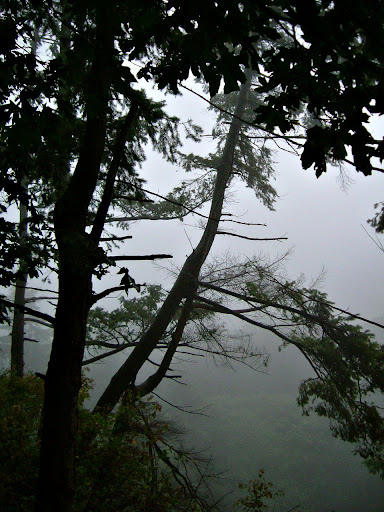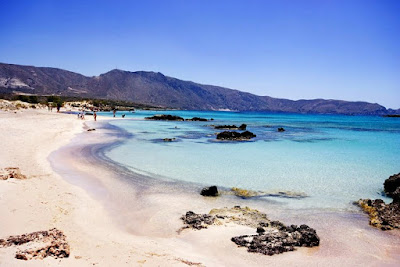 As a weather system approaches, the wind picks up, with the strongest force just ahead of the front. The wind brings waves, making our paddling unstable.
As a weather system approaches, the wind picks up, with the strongest force just ahead of the front. The wind brings waves, making our paddling unstable.Like most mountainous areas, Bowron makes its own weather system and it appears you get everything in a 24-hour period. In fact, whatever weather you are enjoying seems to change 40 minutes later; good for rain, bad for sun. Wisps of cloud that seemed light and airy only hours early have become dark. Careful to hug the shore, we are ready for a quick escape from lightening as thundershowers break.
For this small band of kayakers, the weather forecast is helpful, but it just one portion of the equation. Local weather, and more importantly, wind, comes from a mixture of factors.
Local knowledge of the topography, the relative temperature of land and lake we paddle help predict how windy and soggy our afternoon will be.
Today, the cooler air is flowing off the water up the forested slopes, heating and rising as it does so, creating a 5-15 knot intermittent force that turns ripples into small white caps.
A few strong gusts of wind drive us off the lake, breaking for lunch to wait out the worst of it, and knowing that the winds that started mid-morning will subside by late afternoon and rise again after sunset. We snack on warm soup and flatbread, watching as our once crystal clear oasis turns to froth. Warm, dry and now with full bellies, we get back on the water. We’re eager to push through to our next destination knowing that by nightfall the katabatic winds will arrive, as warmer air from the hillsides flows down and out over the chilly lake.
Paddling in unison, we enjoy the crisp air, confident that well before then we’ll be snugged in our tents sipping hot cocoa.























